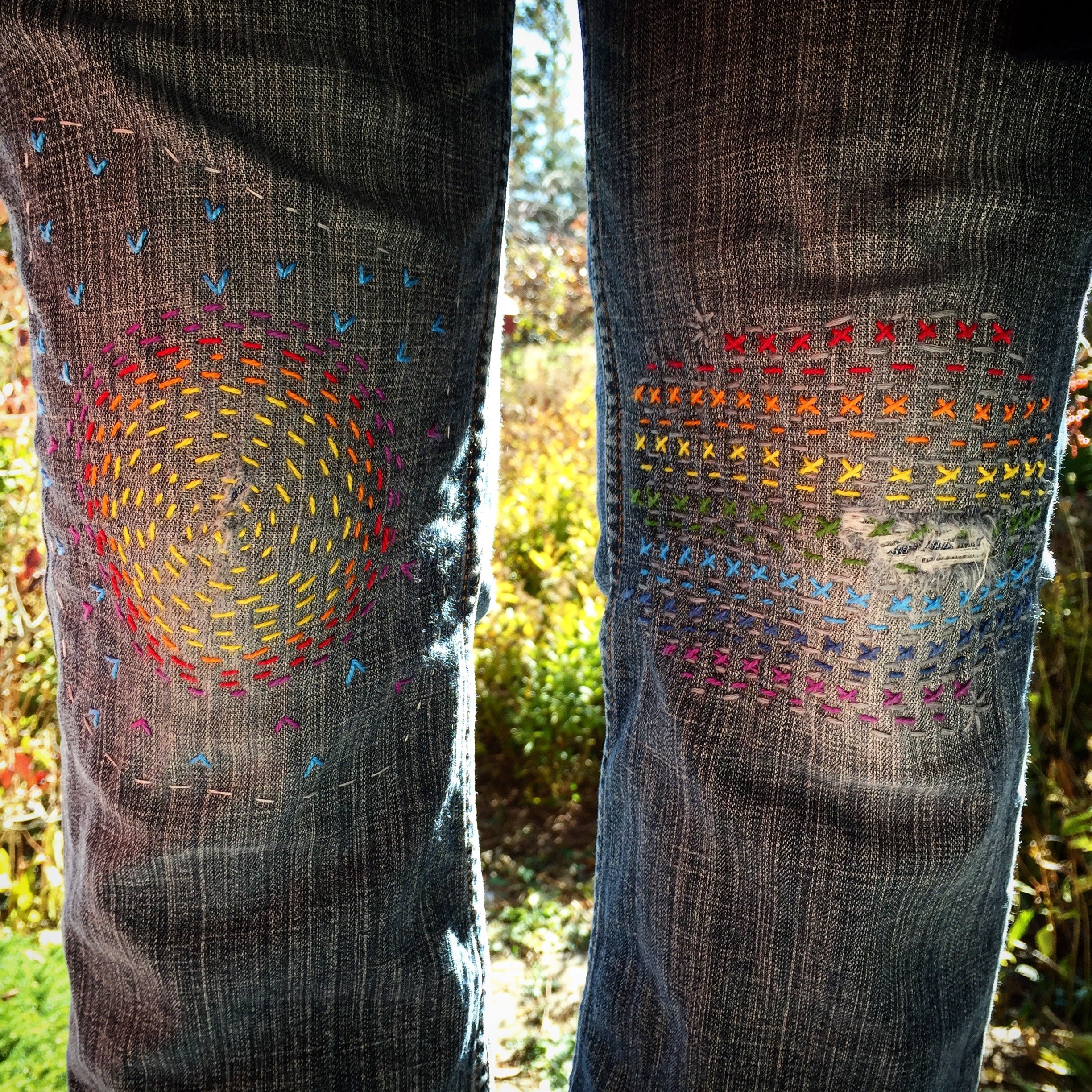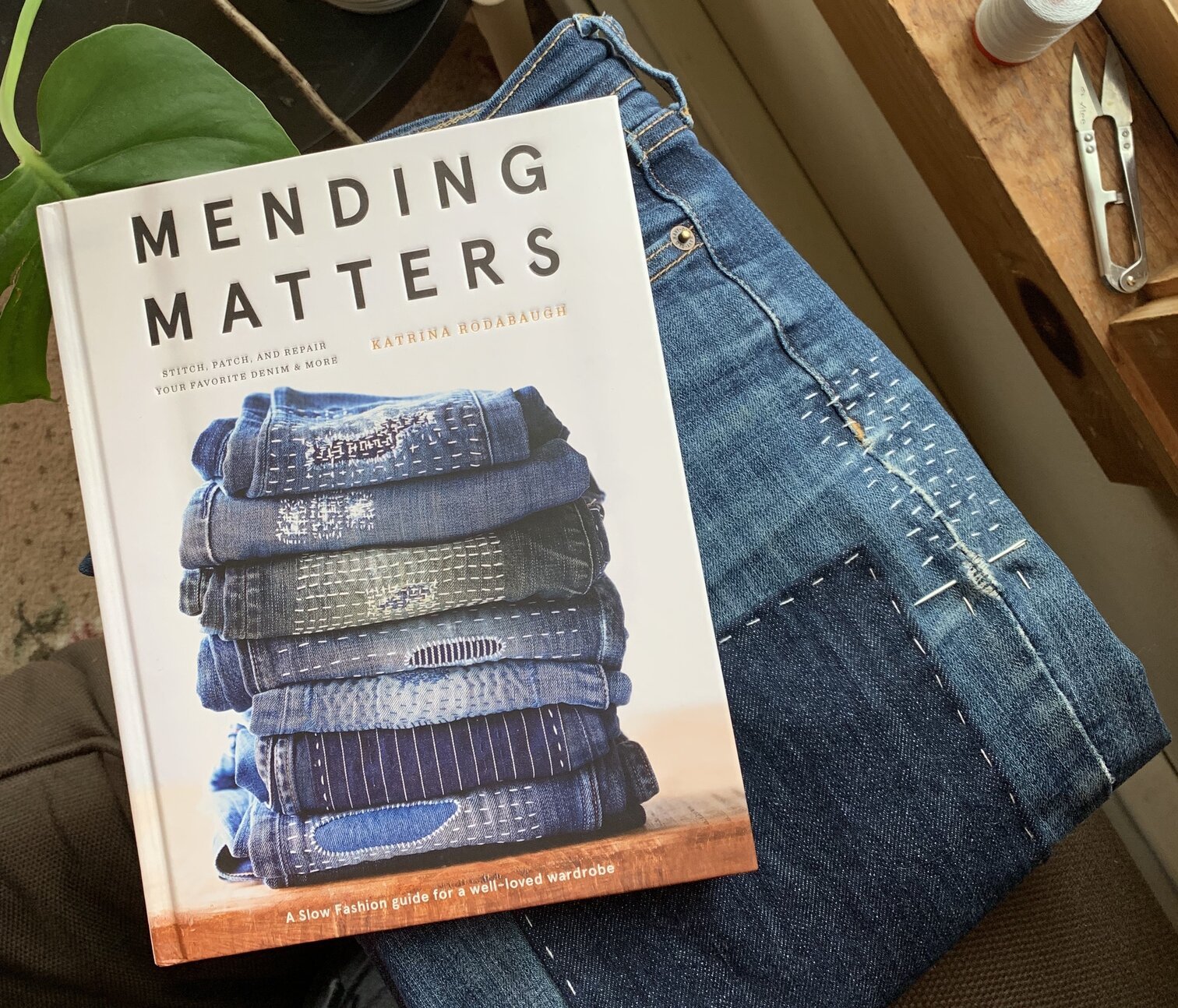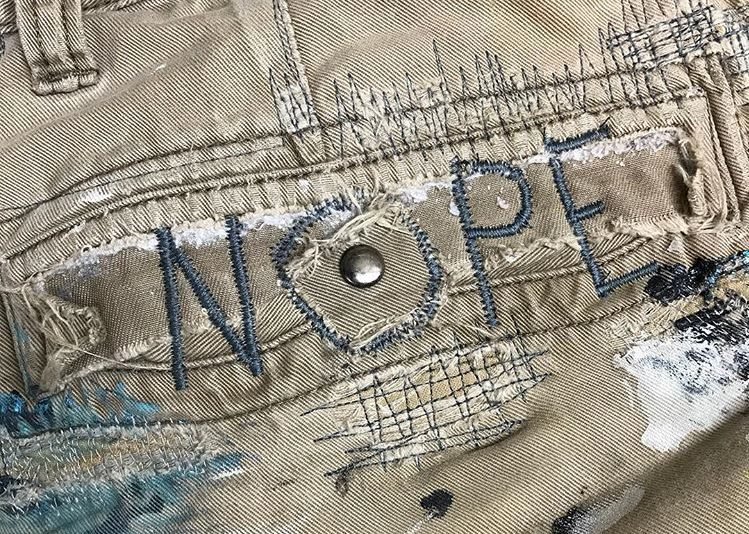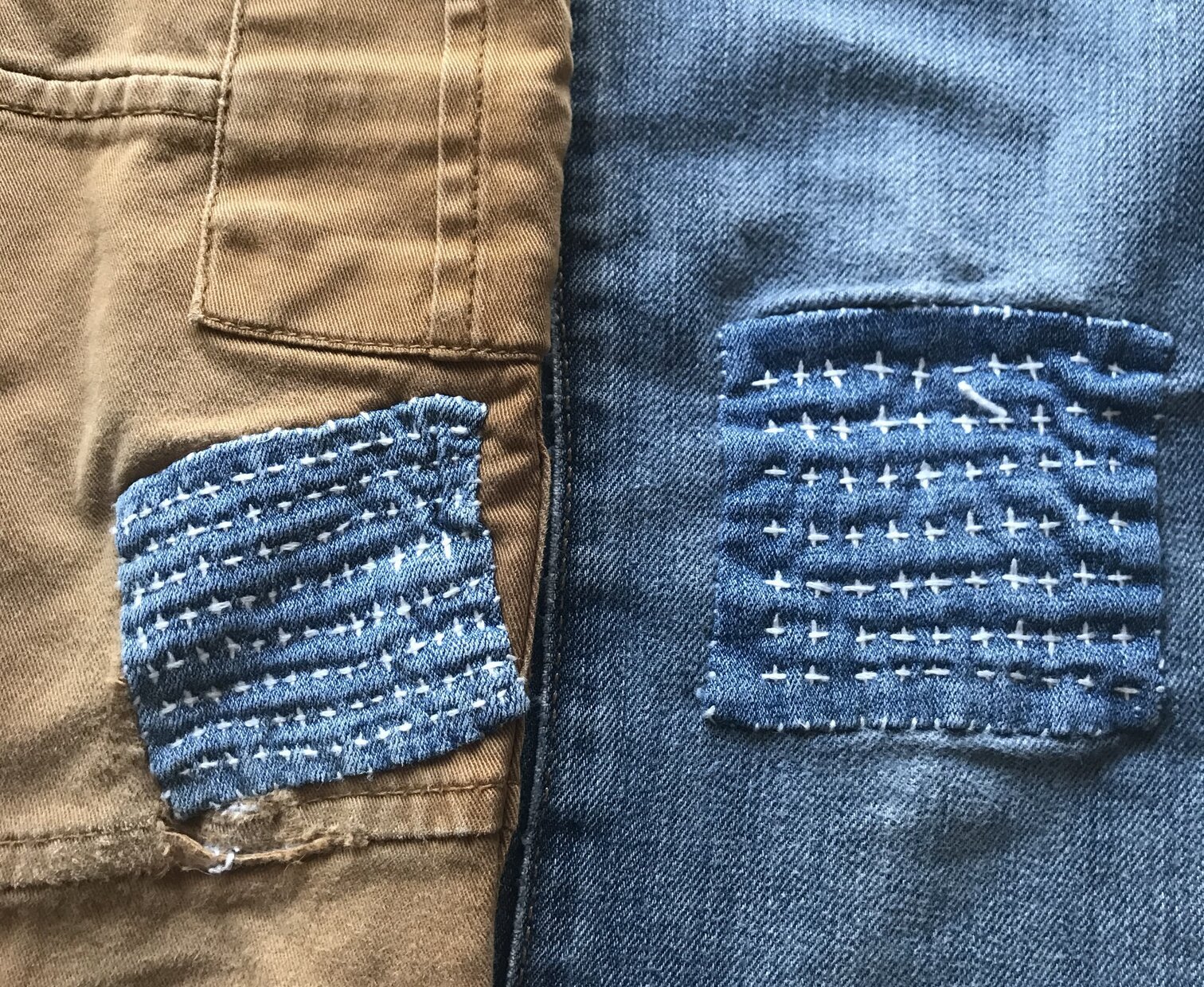Creative mending
Transform ripped, stained or otherwise “ruined” clothing into whimsical wearable art.
Photo courtesy of Kitty Wilkin.
By Amy Paradysz
As a quilter with needle and thread on hand, Kitty Wilkin of Monroe sees no reason to toss her ripped jeans – not even when someone less crafty would see them as beyond the point of no return. Two years ago, inspired by the book Mending Matters by Katrina Rodabaugh, Wilkin began mending thread-bare clothing into whimsical wearable art.
“Mending is just a matter of carving out the time to sit down and stitch,” says Wilkin, who has a blog called “Night Quilter” because she sews once her three kids go to bed. “My purpose for mending is environmental sustainability. I’m trying to play as little part in fast fashion as possible. But I love the aesthetic of visibly mended clothing, so that’s a bonus, too.”
Rhea Butler of Alewives Fabrics in Nobleboro, also inspired by quilting and by Rodabaugh’s book, uses large visible stitches to mend jeans, opting for thread and patches in contrasting colors.
“You extend the longevity of the piece,” she says. “But it’s also more beautiful for having been mended.”
Mending Matters by Katrina Rodabaugh is a recommended resource for stitching, patching and repairing denim. Photo courtesy of Kitty Wilkin.
Jenna Vanna started out darning her kids’ wool socks and, before long, she was doing creative mending for her shop, Woods + Waters Gear Exchange in Brunswick, stitching Gortex patches on vintage ski gear.
“Visible mending comes naturally as something to do on the couch in the evening,” she says.
Her inspiration is Jared DeSemio, a Brunswick resident who wanted to make a messenger bag out of an old hiking pack and taught himself to sew on his wife’s sewing machine. In the 11 years since, he has crafted bags out of a canvas log carrier, military tents, used drop clothes, old feed bags and even, in a commissioned piece, out of the turnout gear of a firefighter who died in the line of duty.
These days, DeSemio rarely goes a day without wearing something that he has mended or altered to fit his personal aesthetic, such as Carhartt workpants mended with a distinctive piece of a well-worn carpenter apron and tailored to a skinny jean cut.
“Pairing something mended with something that fits well and is cut well for your body elevates the look and takes the mends from being humble and frugal to intentional and even luxurious,” he says. “Because you’re starting to tell a story.”
For example, in a commissioned project, DeSemio repaired paintstained cargo shorts with a gaping hole in the back pocket, stitching a circle around a rivet to make the “O” in “NOPE.”
Photo by Jared Desimo.
The idea behind creative mending isn’t to hide the repair but to celebrate it. Photo courtesy of Rhea Butler.
Getting started
When you rip, stain or otherwise “ruin” a piece of clothing, save it as fodder for creative mending – whether you mend that item or cut out a patch to mend something else.
Choose a weight of thread that is similar to the item being mended – thicker thread for denim, lighter thread for cotton.
For visible mending, choose a contrasting color of thread. Don’t be afraid to go bright.
Remember that you’re stitching life into something that otherwise would be tossed, which means this is a low-risk venture. So be gentle with yourself. At first your stitches may be uneven – or more uneven than you want them to be. Take some time to adjust to the feel of the needle and thread in your hands and to the technique of stitching.
Photo courtesy of Kitty Wilkin.
Getting more technical
Kitty Wilkin (nightquilter.com) recommends a simple whip stitch to secure patches, then a running stitch for added durability and aesthetic appeal. She mends with 12wt cotton thread and a variety of stitches for different aesthetics. She typically uses Aurifil thread since that is what she has in larger quantities due to her quilting, but Sashiko thread also works well.
p.s. – Several of the photos we rounded up for this story show white thread on jeans. It turns out that there’s history behind that! Reader Christina Belinsky points out that this look comes from the thousands-of-year-old Japanese technique called Sashiko, which translates to “little stabs.” Historically, indigo-dyed blue cloth was abundant in Japan, and white thread was relatively cheap. Today’s American creative mending trend for well-loved jeans harkens back to thrifty and beautiful Japanese Sashiko.
This article appeared in the 2020 Green & Healthy Maine Winter Guide. Subscribe today!







